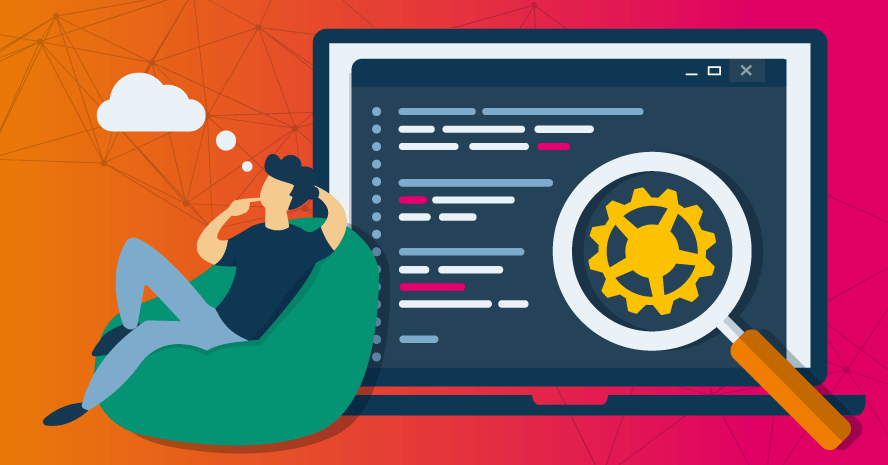Over the past thirty years, web technology has seen a significant change. The main focus of applications is to be spread out across data centers and the cloud in growing numbers. The digital platform of today is more advanced than ever before. Web browsers now run on every device we own, including our desktop computers, cellphones, and smart televisions, thanks to the recent rapid growth. Performing automation testing on a plethora of devices for seamless user experience has become a necessity. These web platforms have also received a constant stream of new features. For instance, the web can now connect to Bluetooth devices, identify your location, and communicate with your file system. The web platform has developed at an astounding rate, and these advancements have stimulated innovation in the application space. Any web application being developed will need testing and benchmarking, in which Playwright plays a vital role. Playwright’s primary objective is to eliminate repetitive processes by using a variety of technologies to locate and launch test cases, control test execution, and assess actual results against anticipated results.
How do Web-based Apps work
Today’s web apps are complete programs with dynamic interactions. Online programs seem very different from desktop apps, which largely retain their appearance from ten years ago. Single-page applications are created using contemporary reactive JavaScript frameworks. PWAs are intended to take the place of native apps.
There are now multiple servers and clients on the web. For modern web applications to produce a single interaction, many servers are needed. Modern online applications are complex, necessitating a dynamic solution. In other words, when web apps proliferate more widely, they get more sophisticated. New problems are being presented as the user base grows. The tools for creating web apps have also significantly improved over the past few years, making development easier and reducing the need for programming. Online testing, however, also has to advance for contemporary web development.
End-To-End Testing
End-to-end testing is a methodology used in the software development lifecycle (SDLC) to evaluate an application’s performance and functionality in real-world situations using data that closely resembles real-world conditions. The objective is to completely recreate a real user scenario in the simulation. The goal of this testing is to validate the system being tested as well as to make sure that all of its supporting systems function properly and behave as intended.
The complexity of software today is increasing multifold. Layers and complete networks of sub-systems, such as UI and API layers, external databases, networks, and even third-party integrations, are the foundations on which applications are created. The stability of each element is crucial to the success of an application because when one fails, the whole thing fails. This indicates that testing the entire program, both at the API and UI layers, is clearly necessary. End-to-end tests should be conducted using both automated testing and manual testing strategies to maximize coverage and to increase the likelihood of discovering new bugs.
How to simplify End-to-End testing?
That’s where Playwright comes into picture. It is a Microsoft open-source NodeJS framework for complete web application automation. Additionally, it enables developers to test web applications across all modern operating systems and browsers.
What is Playwright?
The main objective of Playwright is to create and carry out automated, end-to-end tests of online applications. It leverages CDP (Chrome DevTools Protocol), an asynchronous protocol that is built on top of a single reusable WebSocket connection, rather than Selenium WebDriver APIs to communicate with the browser, resulting in improved efficiency and fewer roundtrips.
This is a factor in why Playwright’s execution is quicker than Selenium’s. Another reason is that tests use browser contexts, which are much quicker to establish than starting a new browser instance from scratch, to run in a clean browser state (the typical approach followed by Selenium).
In addition, Playwright develops more quickly than Selenium, which has a protracted release cycle.
Why Playwright:
- Simple setup using few commands
- Playwright fixes problems and improves readability, speed, and dependability of test authoring.
- The Auto-wait feature makes it possible for items to be displayed before interacting.
- Supports mobile emulation, cross-browser, cross-platform, and cross-language functionality.
- Running tests in a headless browser by default speeds up test execution.
How does Playwright test automation work?
Three separate layers make up the Playwright framework. Let’s examine each layer in greater detail:
The first layer is in charge of building a WebKit that supports three platforms. In this tier, the Playwright testing automation creates a browser instance and sets up a testing environment.
Protocols specific to particular browsers make up the second layer. The WebInspector Protocol for Safari and the Chrome DevTools Protocol for Chromium are two examples of how the Playwright testing can interface with various protocols for various browsers. We employ Juggler for Firefox, an add-on that includes features comparable to Chrome DevTools Protocol but is designed for the Gecko engine.
The third tier, the Playwright library layer, can connect with the previous levels and provides a single, straightforward API for managing three different browsers.
Playwright Tests
Playwright supports all current browsers and gives you the ability to run UI checks in your application. It has Test Hooks, like the majority of test automation frameworks, so you may carry out various tasks, such running each worker’s code once before/after each test.
Due to the Browser Context, which is equal to a fresh browser profile, pages are isolated between tests. Even though several tests are running in the same Browser, each test receives a new environment.
We have created a tutorial that demonstrates how to evaluate a basic website using Playwright. In this case, a level of abstraction and separation between the targeted pages and actions is provided by the Page Objects pattern. You will be able to have code that is simple to maintain because to this separation. Playwright will assist you in completing it regardless of your strategy—whether you employ the Page Objects pattern, Screenplay pattern, App Actions, or nothing at all. Once the code is complete, we want to run the tests and create a JUnit report. For doing this, we use the command:
npx Playwright test –browser=chromium –reporter=junit,line
A JUnit report will be generated as a result, and the output will appear right on the terminal.
5 key Playwright automation features
The Playwright testing framework was created with an emphasis on being a highly modular automation driver that works well with other components of your testing stack. By having direct control over the browser rather than employing a middleman translation layer, it can mimic more accurate user scenarios.
Playwright is a helpful tool for any tester trying to streamline their workflow because new features are continually being introduced by its contributors. Let’s investigate the primary automation features of the Playwright testing framework.
1. Auto-Waits
Playwright conducts different actionability tests on parts before doing specific actions, making it more dependable and simpler to maintain. It implies that the testing framework can concentrate on other elements of the script rather than using code to manage the waiting, simplifying and reducing the likelihood of errors in the tests.
2. Network Control
By automatically simulating file uploads and downloads, handling various authentication methods, intercepting network requests, and mocking out request responses, test scripts can be used to tailor the settings under which an application is tested. It improves testing precision and ensures that software performs as intended under a range of conditions.
3. Browser Contexts
The browser context testing created by the Playwright testing framework is lightning-fast and offers precise simulations of incognito sessions and multi-page scenarios. It is the ideal tool for checking the functionality of your website in incognito mode or testing persistent sessions between tabs.
4. Permissions
Your site can take advantage of all the newest browser features because Playwright supports rights like alerts, geolocation, and user settings, including adjusting the colour scheme and printing options.
5. API testing
Playwright can be a wonderful approach to access the REST API from Node.js if you want to send queries directly to the server hosting your application. If you don’t want or need to load a page and run Js code in it, it may be useful.
Using Playwright’s API testing feature will ensure more thorough and reliable testing results. API testing can be used to set up data and state prior to accessing a web application in a test as well as to check server-side functioning. Additionally, API testing can assist in validating post-conditions following the execution of various browser operations.
Limitations of Playwright
Despite being new, the Playwright testing framework is already one of the most effective resources. It distinguishes itself from the competition thanks to a number of excellent features. However, being a more recent instrument has significant drawbacks. Here are a few examples:
Official support for earlier browsers like Internet Explorer is not provided by the Playwright. However, as long as you have the browser downloaded locally, you can still specify which browser to use. It will make sure that your scripts execute when necessary against the underlying engine. Some computer languages, including Ruby, do not support the Playwright API. It was designed to provide bindings for any language, thus that restriction is merely temporary. Playwright doesn’t test on actual mobile devices. However, by doing tests on desktop browsers, it offers a precise replica of mobile devices.
Conclusion
Testing is more crucial than ever in the fast-paced, cloud-based world of today. Modern applications are developing at an incredible rate, becoming more decentralized and networked than ever. Playwright gives testers the ability to dependably automate all user interactions and capabilities with extremely sophisticated and responsive web applications, enabling software testing to grow and evolve to accommodate for these changes. Additionally, it facilitates a quicker testing cycle for quicker shipment and delivery. It is among the greatest end-to-end testing tools for web apps. You can now run your Playwright scripts instantly on 50+ browsers and OS combinations using LambdaTest – a cross browser testing platform trusted by over a million developer teams in 130+ countries, that allows you to test in parallel and cut down on your test execution time by multiple folds. You can book a free Playwright testing demo with LambdaTest. The LambdaTest platform can execute Playwright tests concurrently over more than 50 different browser and OS settings, accelerating your QA feedback and release velocity. Register for free with LambdaTest.













